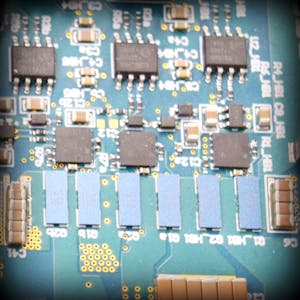How to Select a Gate Driver for GaN FETs: A Practical Guide for Designers
Gallium Nitride (GaN) FETs are revolutionizing power electronics by offering faster switching speeds, lower losses, and smaller footprints compared to their silicon counterparts. But to fully exploit the advantages of GaN, a crucial piece of the puzzle is the right gate driver. Unlike silicon MOSFETs, GaN FETs have unique driving requirements that, if ignored, can lead to sub-optimal performance or even device failure.
In this blog, we’ll walk through the key considerations and criteria for selecting a gate driver for GaN FETs, whether you’re building a compact power supply, a motor driver, or a high-speed DC-DC converter.
1. Understand the Type of GaN FET: eGaN vs Cascode
Before selecting a gate driver, first identify the type of GaN FET you’re working with:
-
eGaN (enhancement-mode GaN): These are true normally-off devices and are driven similarly to silicon MOSFETs, but with tighter gate voltage margins.
-
Cascode GaN: These combine a GaN HEMT with a low-voltage silicon MOSFET to simplify gate drive requirements.
eGaN FETs require specialized drivers due to their low gate voltage swing and fast switching. Cascode GaN can often use silicon MOSFET drivers, but with performance trade-offs.
2. Gate Voltage Requirements: Know the Limits
GaN FETs are extremely sensitive to gate voltage:
| Parameter | Typical eGaN FET | Silicon MOSFET |
|---|---|---|
| V<sub>GS(on)</sub> | 5–6 V | 10–12 V |
| V<sub>GS(max)</sub> | ±7 V (some as low as ±6 V) | ±20 V |
-
Choose a gate driver with tightly regulated output voltage (e.g., 5.0 V or 6.0 V).
-
Avoid drivers designed for 10–15 V outputs unless they can be externally clamped.
Pro Tip: Consider drivers with built-in gate voltage clamps or regulated internal supplies tailored for GaN FETs.
3. Slew Rate and dv/dt Immunity
One of GaN’s superpowers is high-speed switching — rise/fall times in the nanoseconds. But this creates two challenges:
-
Need for high dv/dt immunity in the driver (tens of V/ns)
-
Risk of false turn-on in the low-side FET due to Miller effect
Look for these in a driver:
-
High CMTI rating (>100 V/ns recommended)
-
Active Miller clamp or negative gate drive support
-
Short propagation delay (<20 ns) and minimal delay mismatch for half-bridge designs
4. Source/Sink Current Capability
Fast switching requires fast charging/discharging of the gate capacitance. Even though GaN FETs have lower gate charge (Q<sub>G</sub>) than silicon MOSFETs, their speed demands higher peak current.
| Typical Values |
|---|
| Q<sub>G</sub> ≈ 2–10 nC |
| Peak I<sub>source/sink</sub>: 2–6 A |
-
High peak current (≥2 A per phase)
-
Symmetrical source/sink currents for better control
-
Optional external gate resistors to fine-tune switching
5. Isolation and Topology: Half-Bridge Considerations
If you’re building a half-bridge or high-side topology:
-
You’ll need level shifting or galvanic isolation
-
Opt for isolated gate drivers (with transformer or capacitive isolation) if high-side voltages are significant
-
Ensure bootstrapping is GaN-friendly (some GaN FETs have low reverse recovery diodes, so boot diode choice is critical)
6. Features That Matter for GaN Drivers
Here are some key driver features tailored for GaN:
| Feature | Why It Matters |
|---|---|
| UVLO (Under Voltage Lockout) | Prevents gate from partially turning on |
| Active Miller Clamp | Prevents false turn-on during fast dv/dt |
| Regulated Gate Drive | Ensures gate stays within ±7 V limit |
| Small Package | Reduces parasitic inductance for high-speed layout |
| Dead Time Control | Prevents shoot-through in half-bridge topologies |
7. Popular Gate Drivers for GaN FETs
Here are a few commercially available drivers optimized for GaN:
| Part Number | Vendor | Key Features |
|---|---|---|
| LMG1210 | TI | 5V, 1.2 A source/5 A sink, 300 V/ns CMTI |
| UCC27611 | TI | Low-side, 5.5 A/7 A, Miller clamp |
| LM5113 | TI | Half-bridge, 5.2 V gate, 2 A peak |
| GaN Driver ICs | EPC | Integrated GaN FET + driver (e.g., EPC2152) |
| NCP51820 | onsemi | Isolated driver for GaN, up to 6 A |
8. Layout is Half the Battle
Even with the perfect driver, poor layout can kill your GaN performance. Keep in mind:
-
Minimize loop inductance between driver and FET
-
Place driver as close as possible to the GaN FET
-
Use Kelvin source return if available
-
Optimize power and gate loops separately
Conclusion
GaN FETs offer unmatched performance benefits, but they demand equally capable gate drivers. Selecting the right gate driver means understanding the nuances of gate voltage limits, dv/dt immunity, drive strength, and isolation. With thoughtful selection and careful layout, you can unlock the full potential of GaN in your designs.
Whether you're prototyping or going into production, take the time to match your gate driver to your GaN device, not just by part number, but by performance synergy.

























No comments